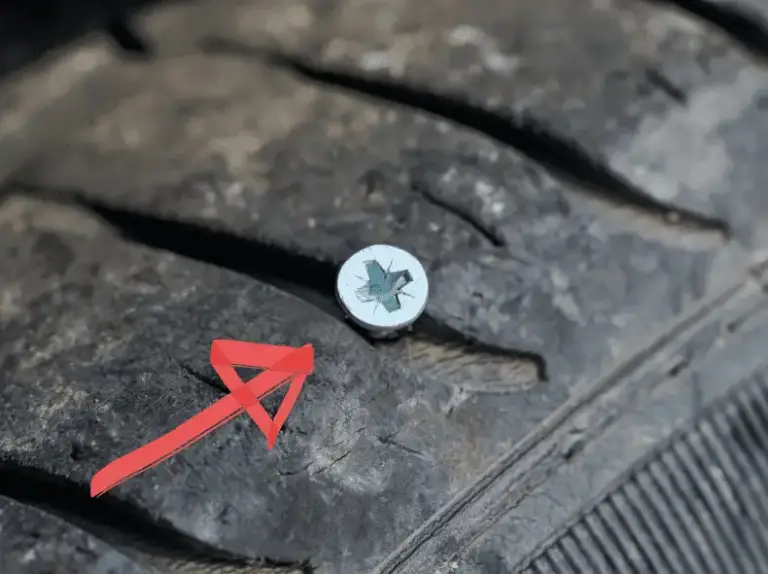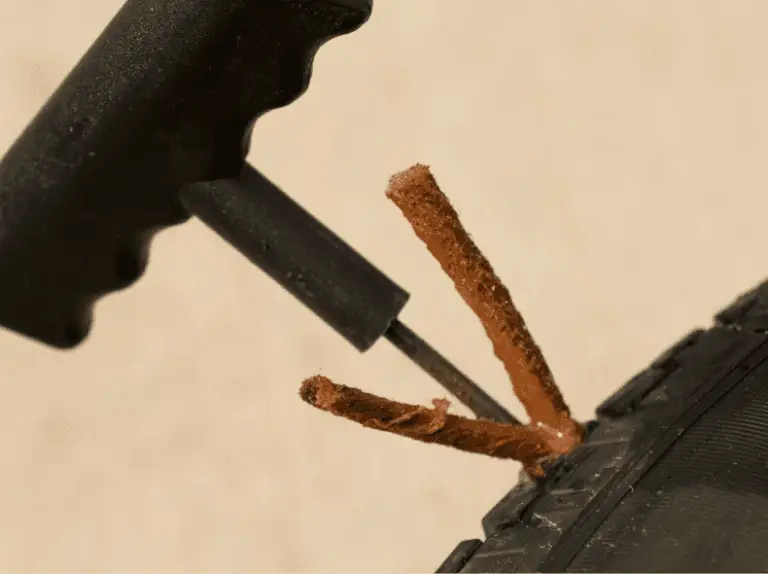Is your tire leaking air even after being plugged? It’s not uncommon, even if you think it’s been properly fixed.
There are several potential causes and solutions that can help you figure out why your tire is still leaking air and what to do about it.
A plug repair is always cheaper than replacing the tire or going to the tire shop for a proper patch repair, but it is not designed as a permanent solution.
In fact, all manufacturers and the Tire Industry Association state that a plug is not a proper fix for a tire. Plugging a tire voids any warranty that came with the tire when you bought it.
This may seem harsh, but their argument is you do not know what other damage has been caused to the tire unless you remove it from the rim and look side.
Tire shops do not patch tires because they believe them to be unsafe and would not want to risk lawsuits if a plugged tire they repaired caused an accident or blew out on the highway.
I’m well aware that online, there will be people who swear that tire plugs last for years and have never had any difficulty with them leaking, but this isn’t the norm.
Let’s get into the details.
Why Your Plugged Tire Is Leaking
Cement:
Strip tire plugs are especially prone to leaking, even more so if cement isn’t used to hold the plug in place.
The hole has weakened the area around the plug. Although the tire belts under the tread provide support, this area – now damaged – will flex slightly when you drive over bumps.
This causes tiny movements in the hole and air to escape. Cement will hold the plug better if used.
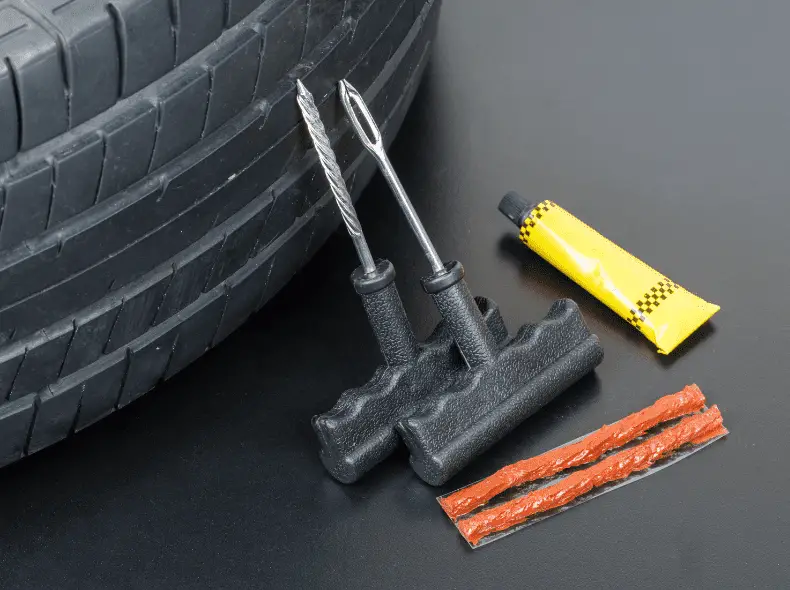
Was The Hole Reamed Properly?
The reaming tool doesn’t look much different from a drill bit; people often use the drill instead to make the hole circular.
This is not a good idea as the drill bit damages the tire more. A reamer or carbide tool should be used. Drill bits rip away at the rubber, cords, and belts underneath the tread, causing unseen damage.
Carbide drill bits cut out cleanly and smoothly, which you want but drill bits pull and rip.
If you used a drill to prepare the hole for plugging, it’ll never seal properly, and you’ll need a new tire.
Type Of Plug Used
Older style strip plugs are not as good as mushroom plugs. Mushroom plugs are often confused with combination patches that are also often called mushroom patches – just to add to the confusion!
Mushroom plugs kits are more expensive as the plug needs to be inserted through the inside of the tire via a screw gun.
The mushroom head then provides a seal of sorts inside the tire while the stem seals the passage as a strip plug would.
Usually glue or cement isn’t needed for mushroom plugs.
The Hole Was Too Big To Start With
It can be quite difficult to judge the size of a hole just by looking at it.
If the hole was bigger than 6mm, it is too big to be repaired by a plug or patch. Getting a tire plug through a tire should take effort.
If when you fitted yours, it seemed to go in easily, this is a sure sign the hole was too big to start with, or if it was drilled, the hole got too big.
Location Of The Hole and Plug
Holes in the shoulder and sidewall should never be repaired. There isn’t supporting cord or belt beneath the rubber in these places to enable a repair, either with a patch or plug.
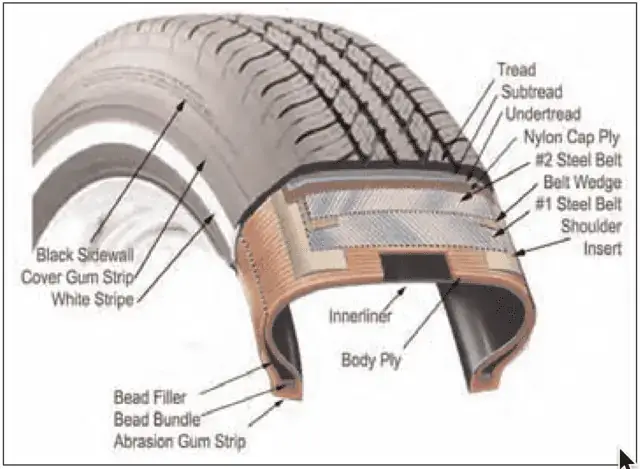
If the tire leaks from a plug in the sidewall or shoulder, don’t drive on it, as it could cause a blowout. Does the area also have what appears to be a bubble or bulge? This indicates that the tire could fail at any time.
What To Do If A Plug Leaks
Option 1.
Take the plug out, clean the area, ream the hole if it wasn’t done before, and complete the repair with a mushroom patch. This isn’t the best option, however.
Option 2.
Take your tire to the tire shop for a professional repair. They’ll assess the condition of the hole inside and out and the general condition of the tire. If they are happy that the tire is salvageable, they may patch it.
It’s always best to mention when you call ahead that you have plugged the tire already, as some tire shops won’t go near a tire that has had a DIY plug repair.
Option 3
Buying a new tire may be the only option if the tire shop says your tire is unrepairable or is unwilling to patch it for you. Although this is the most expensive option, it’ll be the safest.
A repaired tire can never be as safe as a brand new one. It might be that your leaking tire is halfway through its natural lifespan of tread and needs replacing quite soon, regardless.
In Conclusion
Although a plug repair is a cheaper option than replacing the tire or visiting a tire shop for a proper patch repair, it is not designed to be a permanent solution.#
If leaking, it carries with it the risk of causing an accident. It’s best to take the tire to a tire shop and have them inspect it to check for any other damage and determine whether they can patch it or if you need a new tire.



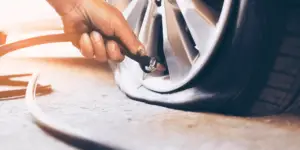
![Are Tire Patches Permanent? [ANSWERED] tire-patch-tire-shop](https://carzaza.com/wp-content/uploads/2023/12/tire-patch-tire-shop-300x224.png)

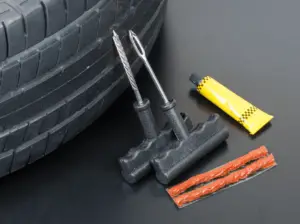
![How Long Does A Tire Patch Last? [ANSWERED] tire-patched](https://carzaza.com/wp-content/uploads/2023/12/tire-patched-300x224.png)
